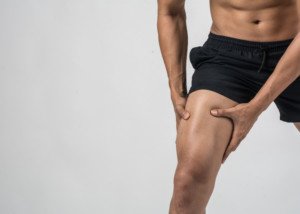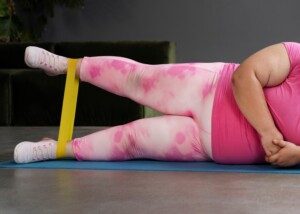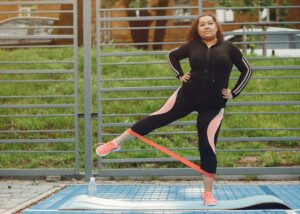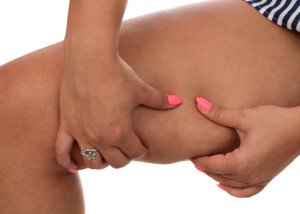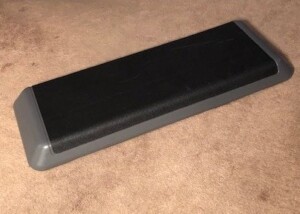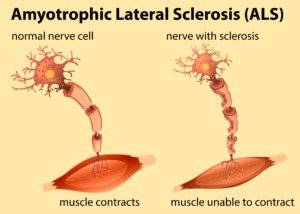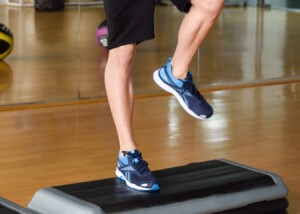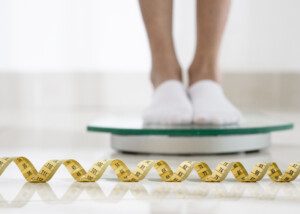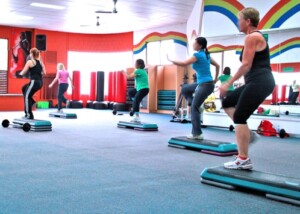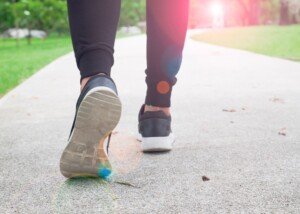Strength Training for Skinny Scrawny Legs

Men with leg muscles too skinny usually wear long pants even on the hottest days, to hide those “chicken legs.”
And even women with stick legs may be hesitant to wear short skirts or shorts.
If you suffer from skinny legs, you can make those leg muscles grow.
There are weight training routines that will shape and sculpt leg muscles without bulking these muscles; so women, don’t fear getting big muscles.
I’ll be honest: To get nice shapely legs and increase size of muscles, you must be willing to work hard. But, your legs are worth it, aren’t they?
There are key exercise routines that will do the trick; namely, weight lifting. Again, I’m not talking about bulking muscles; this is strength training.
Key exercise equipment for adding muscles to skinny legs:
Barbell for squats
Leg press
Deadflit
Prone hamstring curl
Seated hamstring curl
Leg extension
There are other exercise routines that can add muscles to skinny legs such as hard sprints and box jumping, but let’s start out with these.
My No. 1 recommendation is the floor leg press, even though you may have heard that barbell squats are the best way to put muscle size on skinny legs.
The thing with barbell squats is that it can take a while to learn proper form, and bad form can result in low back pain or low back injury.
Secondly, if your femur length is at least as long as, and especially longer than, your torso length, squats probably will not feel right for you. If your shin is short relative to your thigh, ditto.
Overall body height is NOT relevant. But try squats anyways and see how they go.
Also, don’t assume that your thin legs can’t lift much weight. Some thin legs can lift a lot of weight.
I’ve seen men with “thin” legs squatting 225 for reps. Hmmm. Could be due to SHORT femurs relative to torso length and especially if the shins are long relative to femurs!
I rarely see men with scrawny-looking legs pressing huge amounts of weight with the floor leg press equipment.
So let’s talk about leg pressing first. You can do this blindfolded. The mistake men and women make, who want to add size to their leg muscles, is that they do not use heavy enough weight.
And they use poor form. The weight should be heavy enough such that you only have enough strength to do between six and 10 repetitions.

Shutterstock/Sjale
Your muscles should be exhausted as that last repetition approaches. Both feet should always be flat on the pressing platform the whole time.
Barbell squats. Once you have some conditioning, the same rule applies: Weight should be heavy enough for six to 10 repetitions. Make sure you squat so that your femurs are parallel to the floor.
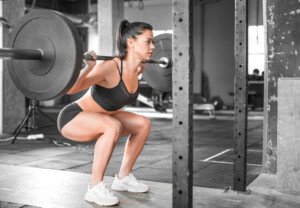
Shutterstock/B-Media
Leg extensions. Always warm up with lighter weights for about 10 minutes, several sets, before lifting heavy weights with this exercise equipment.
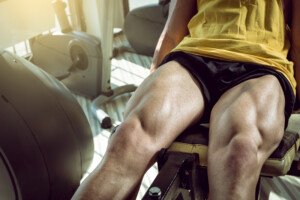
Shutterstock/Ajan Alen
Weights should be heavy enough for no more than 10 reps. LOWER THE WEIGHTS SLOWLY, maybe for a two-second or three-second count. Don’t let weights just fall.
Hamstring curls. The volume of hamstring curls should be about 75 percent of the volume of quadriceps muscles (front of thigh) weight lifting routines.
Many people neglect the hamstrings because they can’t see them. Use heavy enough weight for 6 to 10 reps.
For prone (stomach-down) hamstring curls, bring foot pad all the way to your butt. Always lower for a two-three-count.
These are the basics for adding muscle volume to skinny legs.
 Lorra Garrick is a former personal trainer certified through the American Council on Exercise. At Bally Total Fitness she trained women and men of all ages for fat loss, muscle building, fitness and improved health.
Lorra Garrick is a former personal trainer certified through the American Council on Exercise. At Bally Total Fitness she trained women and men of all ages for fat loss, muscle building, fitness and improved health.
Cardio Exercise: Before or After Lifting Weights?
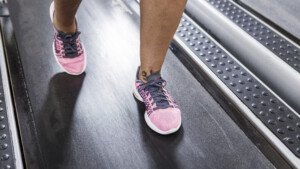
Should you do cardio before or after your weight workout?
This question comes up all the time in gyms, locker rooms and everywhere else. (more…)
Which Burns More Fat: Leg or Upper Body Strength Training?

The question of which burns more calories – lower body strength training or upper body strength training – comes up every so often.
And the answer is the lower body. (more…)
Want a Bigger Butt from the Elliptical Machine?

Some women actually WANT a bigger butt & think the elliptical will do this, while others fear a bigger rump from the elliptical; both women are wrong.
There’s good news and bad news. The good news is for the first group of people: The elliptical machine will not give you a bigger butt.
The bad news is for the second group: Your butt will not get bigger from using the elliptical machine.
I don’t know where this idea ever came from. Maybe it’s because so many people use the elliptical trainer wrong, in that they lean forward, hanging onto the equipment, their butt sticking way out.
This bad posture while pedaling on the elliptical trainer will not make your butt bigger, no matter how fast the pedaling speed, how long you’re on the equipment, and how high the pedal crank tension is. It just will not happen.
If you actually believe that your butt’s gotten bigger since you began training on the elliptical, this is either in your imagination; or, if you’ve objectively measured a bigger butt, then the increase in size is from some other cause.

Credit: Dreamstime/Orangeline
Because the reason you cannot get a larger butt from the elliptical is very simple:
Elliptical workouts are of the duration type. This is aerobic in nature, and duration-based or endurance-based exercise recruits only slow-twitch muscle fiber.
Slow twitch muscle fiber does NOT grow in size.
When you use the elliptical machine, the slow-twitch muscle fiber in your butt gets targeted.
These muscle fibers are designed for endurance or long duration, and will NOT grow in size.
You don’t see bodybuilders, who want to make their butts bigger, hanging out on the elliptical machines, do you?
For those of you who perform high intensity interval training on this particular equipment, perhaps you’re still skeptical, since HIIT recruits fast-twitch muscle fiber, which does have the potential to increase in size.
However, under the circumstances of HIIT training on the elliptical, you still won’t get that bigger butt.
Fast-twitch fibers only have the potential to grow in size. In other words, just because an exercise routine recruits fast-twitch muscle fibers, does not mean it will make these fibers grow.
If that were the case, then every person who engages in any physical activity that requires short bursts of power or rigorous exertion, would be bulked up.
This includes people who move furniture for a living! Seems to me that most furniture movers are rather wiry in build!
The elliptical machine will not make your butt bigger. If you want smaller glutes, reduce your overall body fat percentage.
If you want larger buns — or at least, a firmer pair of glutes — then do heavy intense barbell squats and other types of squats (such as shown below), plus weighted lunges and wind sprints.
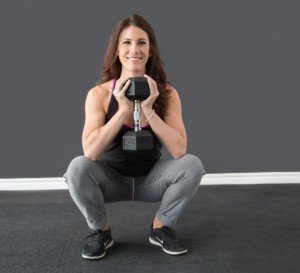
 Lorra Garrick is a former personal trainer certified through the American Council on Exercise. At Bally Total Fitness she trained women and men of all ages for fat loss, muscle building, fitness and improved health.
Lorra Garrick is a former personal trainer certified through the American Council on Exercise. At Bally Total Fitness she trained women and men of all ages for fat loss, muscle building, fitness and improved health.
.
Top image: Shutterstock/Doronin Denis
Why Plyometric Exercise Burns Thigh Fat

Plyometrics is a unique approach to burning fat in the thighs.
Any woman who’s been doing plyometrics for a while will not have thunder thighs. (more…)
How Important Is Arm Movement in Step Aerobics Classes?
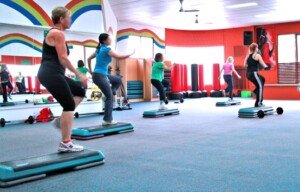
If you leave out the patterned arm movements in step aerobics classes, will you still get a good workout? (more…)
Best Weight Loss Exercise for Very Heavy People: Deadlift

The deadlift is a major weight loss exercise that nearly any obese person can do.
This is an exercise where you stand in one spot and don’t do any jarring motions like in an aerobics class. (more…)
Men’s Beginner’s Guide for Taking a Step Aerobics Class
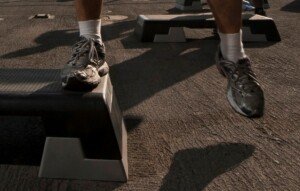
I’ve seen more than one man stumble on the stepper in a step aerobics class while the women moved with ease; here is a beginner’s guide for men who feel awkward about being the only man in a step aerobics class.
The Intimidation Factor
Are you a man who’s thinking of taking a step aerobics class, but are “intimidated” or feel awkward at the idea of being the only man in a group fitness class dominated by women?
I’m a former certified personal trainer who has instructed some step aerobics classes at a health club, as well as participated in many such aerobics classes at a variety of gyms, given by a variety of instructors.
Step aerobics, in my opinion, are among the best kind of cardio group fitness classes for developing cardiovascular fitness and improving other elements such as hip flexor strength and ankle strength.
The intensity can be increased a number of ways, including adding “risers” to the step platform, kicking the knees up higher, and jumping in between moves.
Step Classes Dominated by Women. Why?
Where are the men? They are on the treadmills, elliptical machines and revolving staircases.

localfitness.com.au
In fact, if a man is concerned that he’ll look ridiculous in a step aerobics class with all those women, here’s a little food for thought:
A man looks outright ridiculous on the treadmill holding onto the machine while the machine is at an incline–and of course while it is level.
If a man is worried how he’ll “look” in a step aerobics class, he should be more concerned how he looks when hunching his body over the revolving staircase while clinging to it for dear life.
At least in a step class, there is nothing to hold onto, and therefore, it’s impossible to cheat in this workout!
With that said, here are some items for men to reflect upon, next time that urge to try a step class strikes, but the intimidation keeps them from entering the room:
#1. Men should ask themselves just why they feel intimidated, threatened or insecure about taking a step class. Men may find that they actually cannot come up with a definitive answer.
#2. If you feel you won’t be able to keep up with the women, then use only the platform and no “risers.”
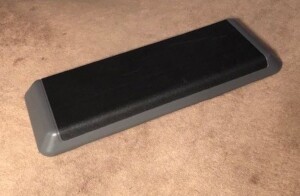
Another option is to try a step session in which many of the women don’t appear to be fit.
It’s a myth that every woman in a step class is in tip-top physical condition. Many are novices, just like yourself.
#3. Men may wish to observe a step class to test their misguided theories that all the women are in superior physical condition.
Perhaps a man can do some stretching, sit-ups, crunches or dumbbell routines just outside the step class studio so they can discreetly observe the participants.
#4. Once in the class, a man can modify his movements to minimize stumbling or getting taxed too quickly.
If the high knee kicks are tough, then don’t lift knees so high. If the instructor is telling everyone to hop in between moves, then don’t hop.
If a man doesn’t like doing arm choreography, then don’t; position arms as you would if jogging on a track.
If the pivoting makes you dizzy, then skip the pivoting and just step in place during a pivoting sequence.
#5. Select a location in the corner of the room in the back if you’re a man concerned about women viewing you.
#6. Wear clothes that you’re comfortable in; there is no dress code. Don’t allow the magenta, shimmering Spandex of a woman to intimidate you.
#7. Men, keep reminding yourself that there is nothing feminine, girly or sissy about a step aerobics class.
In fact, the opposite is true. Stepping is more difficult than flat course walking, yet a man would never consider flat course walking to be girly or not macho.
Stepping, especially with other moves mixed in like kicking and lunging, demands a lot more than sitting on a stationary bike while viewing the gym’s overhead TV screens, yet many men think nothing of settling on a bike and doing just that.
Step classes vary as much as their instructors. Some are “easier” than others, but again, you control the intensity by any of the following:
a) adjusting riser quantity
b) increasing kicking height
c) adding jumps (such as jumping in between the “lunge step” move rather than just stepping in between the move), or
d) lunging or squatting deeper. Some step instructors indeed incorporate jumping. Some instructors are lunge-happy and have their classes doing endless sideways lunges that involve the platform.
And then there are the “three repeaters.” Some step instructors will have the class do “ten repeaters.”
If you’re a man who thinks step classes are too easy, just try “ten repeaters” on a platform that’s elevated by four risers. Do 10 sets of “ten repeaters” each leg, alternating legs. Yes indeed, just try it, guys!
 Lorra Garrick is a former personal trainer certified through the American Council on Exercise. At Bally Total Fitness she trained women and men of all ages for fat loss, muscle building, fitness and improved health.
Lorra Garrick is a former personal trainer certified through the American Council on Exercise. At Bally Total Fitness she trained women and men of all ages for fat loss, muscle building, fitness and improved health.
Why Are Most Women in Water Aerobics Classes Obese?
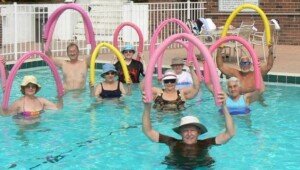
Why are most women in water fitness classes always obese?
I’ve always noted this phenomenon, but finally decided it would make for an interesting article after I caught this exact question in a fitness forum. (more…)
How to Make Fast Walking Burn 20 Pounds of Fat
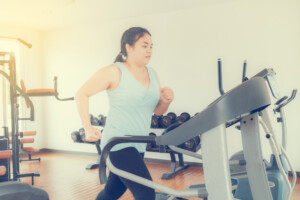
Yes, it IS possible to lose a lot of weight, burn a lot of fat, with fast walking.
There is a certain way to make this work–something you’ve probably never tried before.
Fast Walking and Losing 20 Pounds
If you’ve been walking fast all along (on the job, while shopping), merely continuing to do so will not suddenly start melting off 20 pounds.
This is because brisk movement during activities of daily living has become a regular fixture in your life, a constant that your body has adapted to.
To lose 20 pounds (assuming your eating habits remain constant), you must impose a demand on your body that it’s not accustomed to.
If you’re normally a fast mover on the job, shopping, etc., you then need to incorporate brisk walking sessions into your life in addition to the movement you normally do in daily living.
So no matter how many steps a day your pedometer says that you accumulated on the job, shopping and around the house, you must add to that with a treadmill session or speedy walk around the neighborhood to lose the 20 pounds.
If your normal walking speed in daily living is slow or casual, and you do a lot of walking due to the nature of your job, then speeding it up to a brisk pace can result in some weight loss, but nowhere near 20 pounds.
You will still need to add something to the equation: a fast walking session beyond your normal daily movement.
Recap
-If you want to lose 20 pounds and don’t want to starve yourself to do it, and especially if you’re already eating sensibly, then fast walking can get the job done.
-If you’re a slow or casual walker in daily life, make a habit of moving briskly whenever possible.
-If you’ve always been a speedy walker, don’t keep thinking that one day this will start causing weight loss.
-Regardless of movement speed in daily life, you must stick to consistent fitness walking sessions to drop 20 pounds. Sessions should be 30-60 minutes
-Walking hills or a treadmill incline will increase the calorie burn. So will wearing a weighted backpack.
And according to a University of Pittsburgh study, fast walkers live longer!
But if that doesn’t matter to you, certainly the 20 pound weight loss will!



